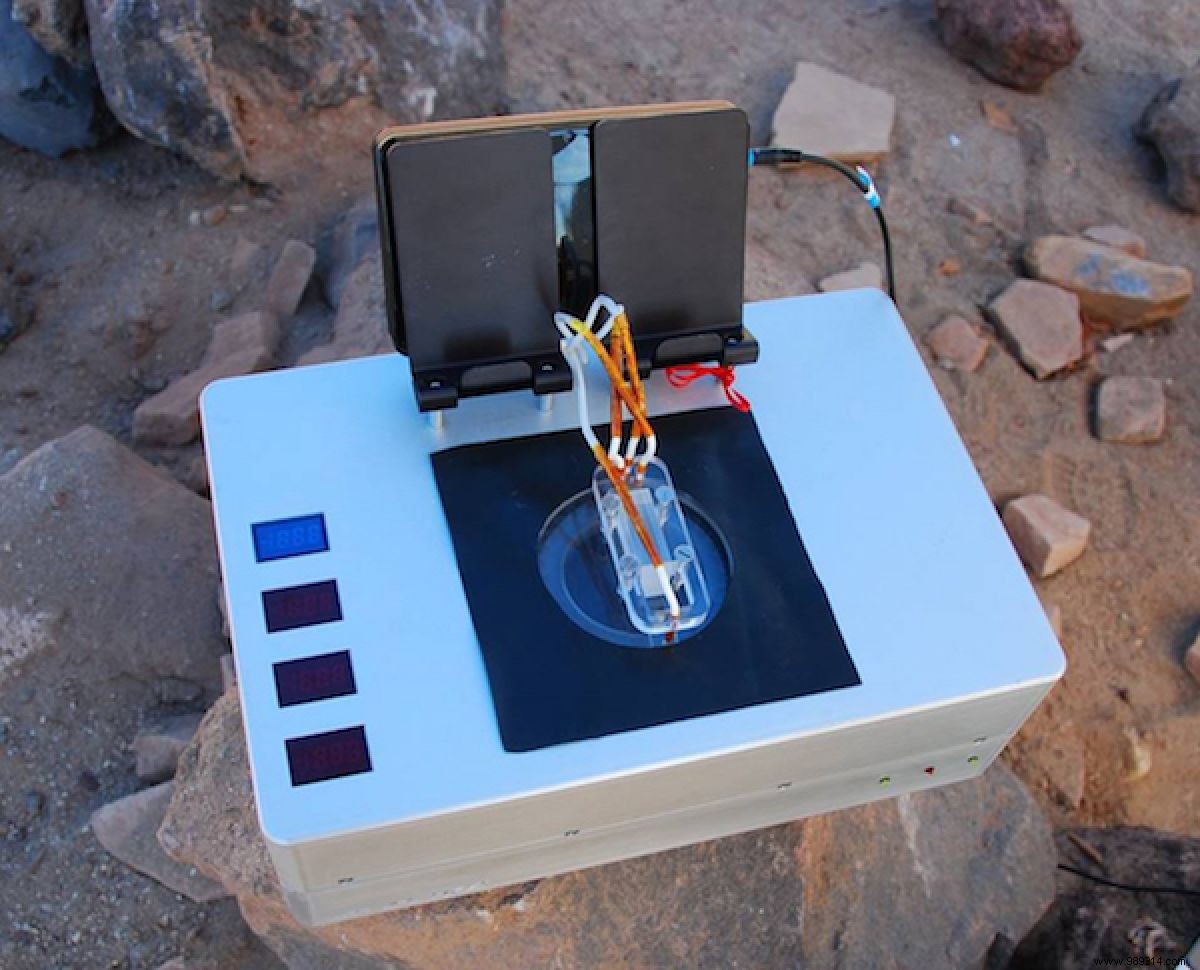US researchers have developed a kind of miniature laboratory that can perform biochemical analyzes. With dimensions close to those of a simple shoebox, this device could equip future rovers exploring Mars and other lands.
Detectingtraces of extraterrestrial life is a real challenge for scientists. The difficulty lies in particular in the fact that the experts do not really know what types of traces to look for. However, organic molecules such as amino acids certainly embody the most obvious biosignatures. However, the detection of these biosignatures is not easy.
The Curiosity rover, present on the planet Mars since 2012, carries about ten instruments whose mission is to track down any traces of life. These include the gas chromatograph, the X-ray spectrometer, the neutron emitter-detector or the mass spectrometer. Let's also mention the presence of CheMin, capable of analyzing minerals in rock samples. This instrument uses diffraction as well as X-ray fluorescence.
However, these instruments have difficulty analyzing amino acids and are only partially automated . According to a publication in the journal Analytical Chemistry on August 25, 2020, researchers from the California Institute of Technology (Caltech) and the Jet Propulsion Laboratory (JPL) have developed a portable miniature laboratory and operating completely autonomously. Called Chemical Laptop (CL), this device surprises with its dimensions:12 x 24 x 38 cm for only 7 kg!
Equipped with a battery, it can be controlled remotely using a very simple interface . Its components are otherwise commercially available or can be manufactured quite easily. In addition, two microchips complete the set, one for the treatment and labeling of a liquid sample and the other for the separation of compounds. The CL also incorporates a laser-induced fluorescence (LIF) detection system.

“The CL allows performing labeling, separation and detection of organic molecules, all in a fully automated way”, can we read in the study.
The device was tested during a simulation mission to Mars in a Chilean desert. The rover drilled the ground at several sites in order to take samples to transmit to the extractor. The compounds to be analyzed were extracted by heating the samples with water. The device was able to analyze amino acid levels in soil in parts per billion (ppb)
According to the researchers, the sensitivity of CL is three times higher to that of current methods based on gas chromatography associated with mass spectrometry (GC-MS). Nevertheless, further research is needed to adjust the device. These include adapting it to spaceflight as well as extraterrestrial conditions.